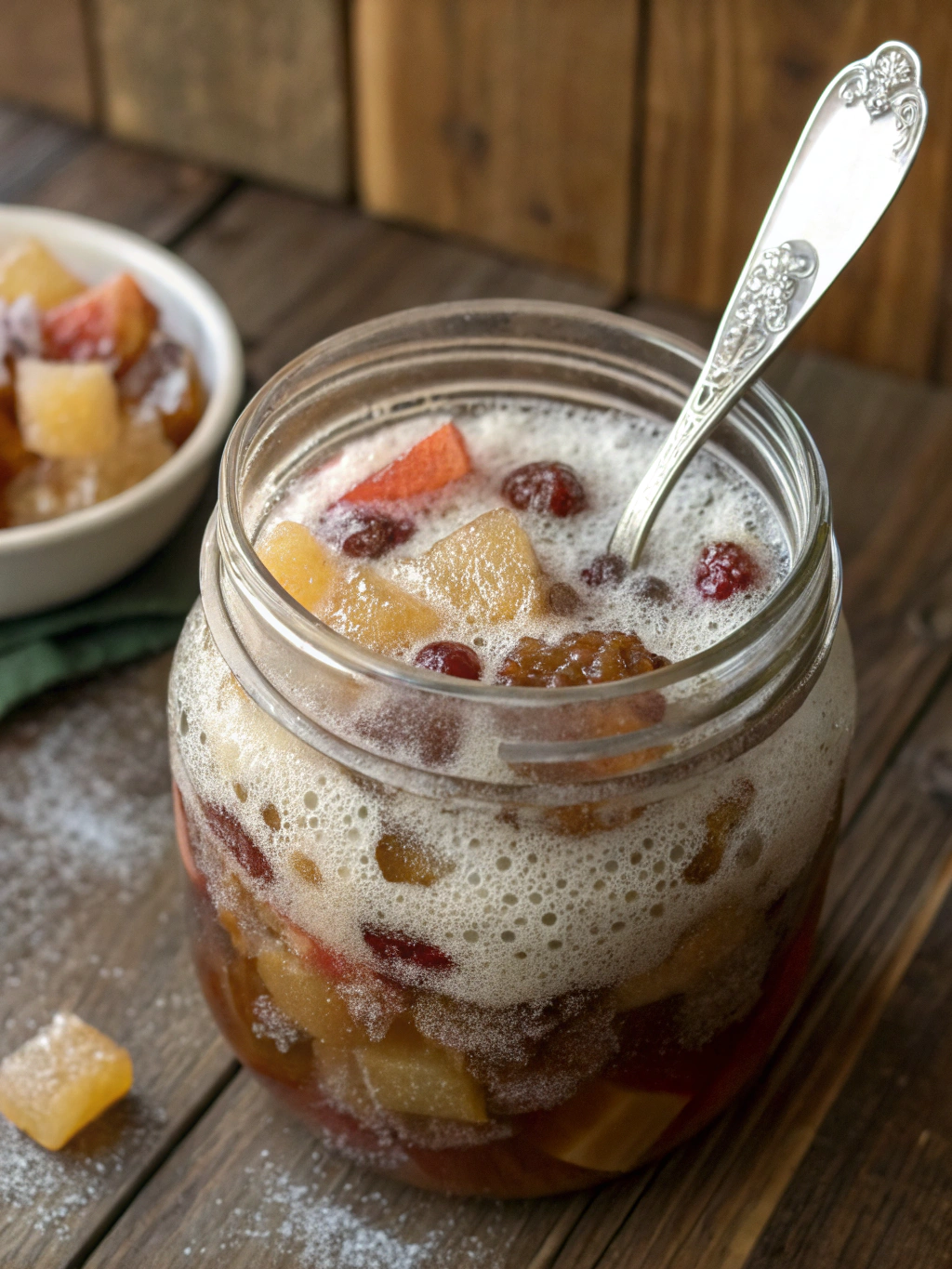Ingredients
Equipment
Method
- Select the highest quality ginger root available, looking for firm, plump roots with smooth skin and visible growth nodes. Rinse the ginger briefly under cool water, removing any obvious dirt while preserving the natural microbial community on the skin.
- Using a sharp knife, cut the unpeeled ginger into small ¼-inch pieces, exposing fresh surfaces that release aromatic oils and provide increased surface area for yeast colonization. The distinctive spicy fragrance should be immediately apparent.
- Combine the filtered water and cane sugar in a clean glass jar, stirring vigorously until the sugar completely dissolves. The clarity of this solution indicates proper dissolution, creating the nutrient-rich environment that wild yeasts require for rapid multiplication.
- Add the chopped ginger pieces to the sweetened water, ensuring all pieces are submerged beneath the liquid surface. Cover the jar with a loose-fitting lid or cloth secured with a rubber band, allowing airflow while preventing contamination from insects or dust.
- Place the jar in a stable location away from direct sunlight, maintaining consistent room temperature (optimal range 68-78°F). This location should be easily accessible for daily feeding.
- Each day for the next 7-10 days, add 1 teaspoon of grated fresh ginger and 1 teaspoon of sugar to your developing culture. Stir gently with a clean wooden spoon, observing the gradual transformation as beneficial microorganisms establish their colony.
- Monitor for initial signs of activity including slight cloudiness, small bubbles forming on the surface, and a developing yeast-like aroma. These typically appear around day 3-4.
- By day 4-6, your ginger bug should display vigorous bubbling activity, indicating successful wild yeast capture and proliferation. The liquid develops a slightly tangy, effervescent quality with a pleasant ginger bite.
- Once active (showing consistent bubbling and effervescent aroma), your ginger bug is ready for beverage production. Continue daily feeding to maintain peak activity, or refrigerate to slow fermentation.
- To use, strain 2-4 tablespoons of the liquid (not the ginger pieces) per quart of sweetened tea, fruit juice, or flavored water for secondary fermentation. Allow 2-4 days at room temperature, then refrigerate to slow fermentation.
Notes
Ensure ginger skin remains intact as it harbors beneficial wild yeasts essential for fermentation success. Use only filtered or spring water - chlorinated tap water will kill beneficial microorganisms. Maintain consistent room temperature between 68-78°F for optimal results. Well-maintained ginger bugs can remain viable for months or years with proper care. Trust your senses - healthy cultures have pleasant, yeasty aromas while contaminated ones smell distinctly unpleasant.
